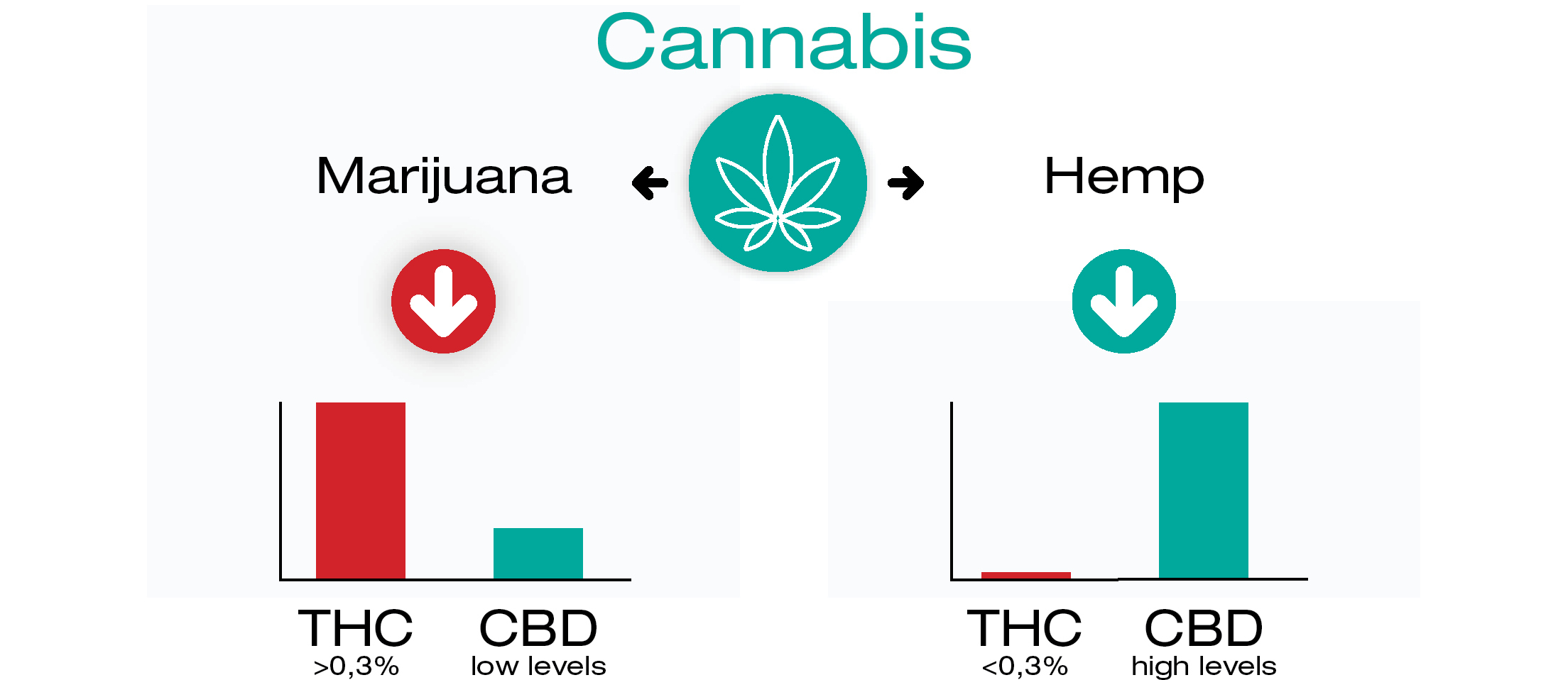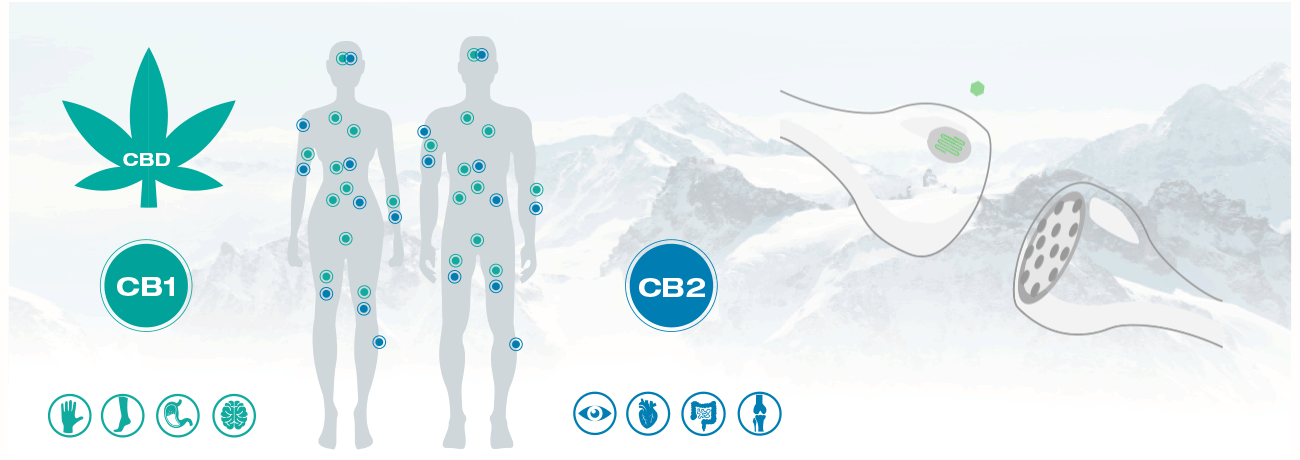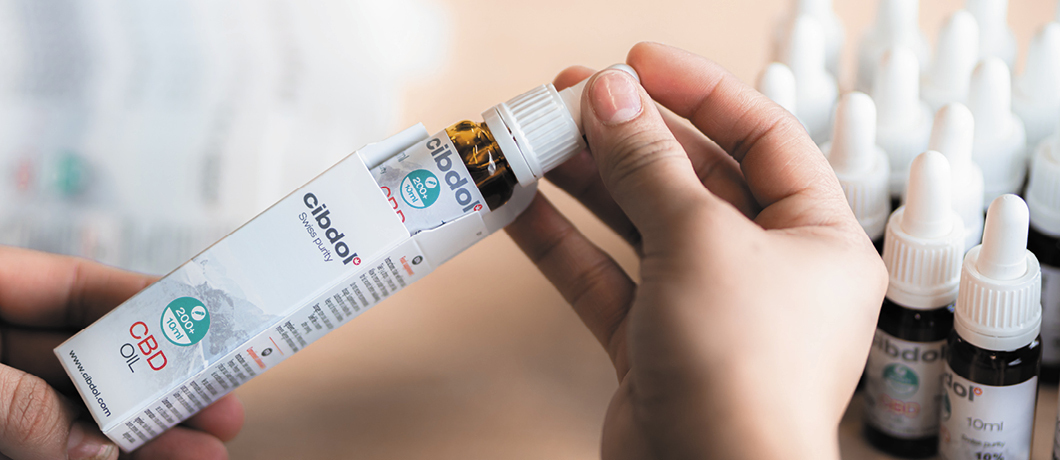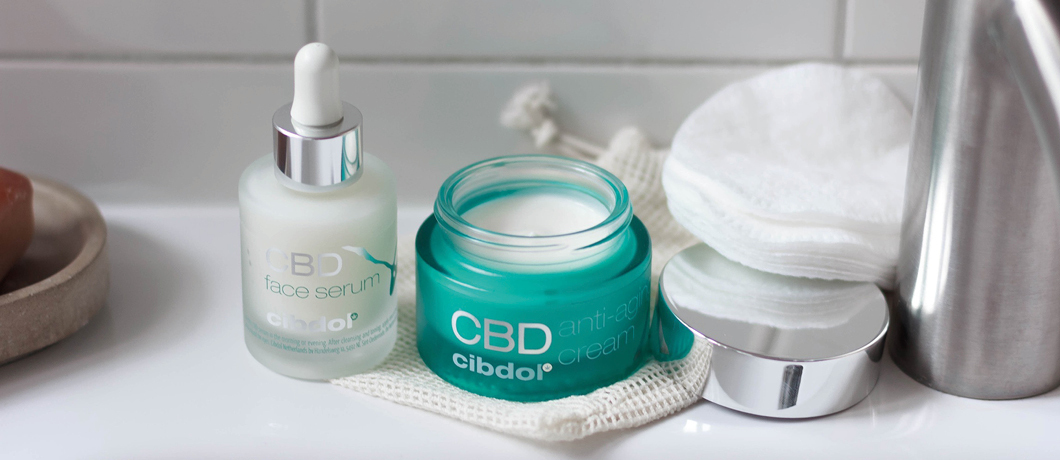Read more.
CBD: what you need to know
CBD (cannabidiol) belongs to a family of compounds called cannabinoids. These special molecules are abundant within the Cannabis sativa species, and, when consumed, can exert a distinctive influence on the mind and body.
Contents:
Keep reading to find out what CBD is and how, exactly, it works.
What is CBD?
Cannabidiol (shortened to CBD) is one of over a hundred organic compounds produced by cannabis varieties including marijuana and industrial hemp. Referred to as cannabinoids, this extended family supports crucial plant functions.
However, when humans consume CBD, something quite extraordinary happens.
CBD is capable of interacting with receptors that exist inside all of us. The full extent of this interaction remains under investigation, but it could influence processes such as sleep, appetite, mood, and much more.
Fortunately, CBD is well-tolerated and doesn't appear to cause harmful side effects when used responsibly. This, along with its proposed influence on the body, has led to a surge of interest in cannabidiol.
Where Does CBD Come From?
Although different ratios of CBD exist in virtually all varieties of Cannabis sativa, industrial hemp features the cannabinoid in relative abundance.
Industrial hemp is a subtype of Cannabis sativa that was domesticated over 6,000 years ago in ancient China. Since then, the plant has been selectively bred for its fibre, seeds, and resin before scientists discovered it was a naturally rich source of CBD in the mid-90s.
However, CBD isn't the only cannabinoid produced by the Cannabis sativa species. The cannabinoid family also includes THC, a notorious compound found predominantly in marijuana-type cannabis.

What's the Difference Between CBD and THC?
You likely learned about THC (short for tetrahydrocannabinol) long before CBD. The well-known “high” produced by THC is the main reason marijuana, a type of cannabis used for recreational and/or holistic purposes, is illegal in much of the modern world.
Fortunately, just like two siblings can look similar but have entirely different personalities, CBD and THC act very differently inside the body. Belonging to the same cannabinoid family does not automatically mean their influence on mental and physical well-being is alike.
Specifically, CBD is non-toxic and, regardless of how much you consume, will never induce a high. Moreover, according to the World Health Organization (WHO), CBD has no potential for abuse.[1]
How CBD Works
Knowing where CBD comes from is one thing, but what about the influence on sleep, appetite, and mood we mentioned earlier?
For CBD to exert its influence, it needs a point of contact. Among other molecular targets, CBD interfaces with the body via the endocannabinoid system (ECS). The system is highly sophisticated, but don't worry; we'll simplify some of its fundamental principles.
The ECS exists in all mammals, including dogs, cats, and even non-mammals like goldfish.[2]
In humans, the role of the ECS is, scientifically speaking, a relatively recent discovery (the early '90s), which is why research is still ongoing. However, you shouldn't underestimate the system's significance.
What researchers have learned in recent years is the following; the ECS functions as a regulatory system that plays a balancing role in the vital organs, the brain, and the nervous and immune systems.
Its job is to observe these systems and keep them in working order. By helping to regulate the flow of neurotransmitters, the ECS ensures these signalling molecules don't overreact during periods of illness and stress.
CBD can be viewed as a “general manager” of your endocannabinoid system.
While it doesn't usually get involved directly with the day-to-day running of the ECS, CBD is capable of modulating the binding efficacy of other chemical compounds, and it interfaces with cannabinoid receptors to a degree.
CBD acts as the general manager of your endocannabinoid system.
It doesn't get involved directly with the day to day running, but it does make sure your body's enzymes and chemical compounds are where they need to be when necessary. CBD can, however, lead from the front, and on occasion, will interact with receptors attached to the ECS.
How CBD Interacts With the Endocannabinoid System (ECS)
For cannabinoids like CBD to interact with the ECS, they need an activation point. In this case, the ECS has two types of special receptors—CB1 and CB2—which act as a gateway between the human body and cannabinoids.

CB1 receptors are primarily found in the central nervous system, while CB2 receptors exist chiefly in the immune and digestive systems.
However, these receptors have a "lock" of sorts to ensure the right compounds enter the right pathway. If a receptor interacts with a matching cannabinoid ("the key"), the pathway is unlocked, and the ECS takes action.
CBD's "key" can fit both CB1 and CB2's "locks", but it doesn't really have a strong desire to do so. Most of the time, CBD modulates the binding of other essential chemicals with these receptors instead of unlocking the pathway directly.
Depending on where in the body this interaction occurs, we can experience various physiological effects as a result. However, while CBD is not the only compound that can stimulate CB1 and CB2 receptors, it is one of the few that doesn't have any mind-altering side effects.
CB1 and CB2 Receptors Are Not the Only Receptors CBD Can Influence
CBD's role as a versatile general manager of the ECS extends far beyond just CB1 and CB2 receptors.
It can also influence receptors not directly linked to the ECS. These include receptors that trigger the release of serotonin (5-HT), a chemical that supports feelings of happiness and well-being.
CBD also interacts with TRP channels—which exist inside cells and act like gauges in a car—monitoring parameters such as temperature, pain, and the release of inflammatory signals.
Finally, CBD also prompts a reaction from receptors in the liver (PPAR-alpha), which is something scientists are still working hard to understand.
CBD Also Plays a Part in Enzyme Production and Breakdown
Earlier, we mentioned that CBD belongs to a family of compounds called cannabinoids (specifically "phytocannabinoids"). While these chemicals exist in plants, another type of cannabinoid, known as endocannabinoids, are produced by certain animals, including humans. These endocannabinoids work as signalling molecules that interface with the ECS to produce various actions.
A hugely impactful endocannabinoid is anandamide (AEA).
The body continuously breaks down large concentrations of AEA, but CBD has the ability to slow this process. There is still much to learn about the possibilities linked to this reaction, but researchers believe higher concentrations of AEA could play a part in appetite, sleep patterns, and mood.
How Does CBD Make You Feel?
The exact configuration of a person's endocannabinoid system is unique to them, and as such the impact of CBD may differ slightly from one person to the next. However, search for CBD using an online research library like PubMed®, and you'll find hundreds of research papers, with just as many anecdotal accounts citing CBD's widespread influence.
There's also the concentration and dose of CBD to consider.
Not everyone needs the same concentration of CBD oil to achieve the desired effect.
The easiest way to find out how CBD makes you feel is to try it! Fortunately, the compound won't make you feel high, and with a variety of product types, it's easy to find a formula to incorporate into your lifestyle.
What CBD Products Are There?
The way we consume CBD not only changes the onset of effects, but the duration too. With an idea of how CBD works, it makes sense to move on to the different types of products available.
CBD oil

CBD oil remains one of the most popular ways to consume CBD. It's easy to dose, and you don't need much to experience its effects—a few drops taken throughout the day could be enough to support mental and physical well-being.
CBD capsules
.jpg)
Discreet and straightforward, CBD capsules contain CBD dissolved in olive oil or another carrier oil. They're a fantastic option if you need to dose CBD on the go or if you don't like the taste of CBD oil. CBD capsules also come in various concentrations, making the process of finding the right match for your needs a straightforward one.
CBD creams

CBD creams target the skin, where they offer localised effects. Rather than supporting the entire ECS from inside the body, creams influence receptors in the skin, providing a wide variety of potential outcomes. CBD also works harmoniously alongside dozens of proven skincare ingredients, making it a powerful ally no matter your beauty regime.
CBD supplements
One of CBD's greatest strengths is its synergy with other natural ingredients. As a result, a growing range of CBD-infused supplements feature cannabidiol alongside vitamins, minerals, botanicals, melatonin, and more.
If you're trying to address a particular condition, it's worth researching if there is a specific CBD supplement that could be of help. With more questions, consult a doctor of physician.
Which CBD Product Is Right For Me?
The right product for you will depend entirely on your needs and circumstances. No matter what you choose, it's important to know that there is no single superior CBD product, so take your time to find out what works best.
If you're still unsure of the pros and cons of different ways to take CBD, our dedicated article explains everything you need to know.
Regardless of the product, starting low and going slow is always best.
By this, we mean you should always start with a low-concentration CBD product, taken a few times a day. You should only increase the amount of CBD you take once you've stuck to the same routine for at least a week. A slow and gradual increase is the best way to determine your ideal daily intake, whether it's an extra drop in the morning or an extra capsule at night.
Taking this approach not only gives your body time to adjust, but it lets you find a routine that works for you.
People choose to take CBD for various reasons, and it's crucial you find the right product to match your needs. Remember, CBD works on a principle of balance, and an "everything in moderation" approach should be applied.
Why CBD Is So Popular
We have covered a lot of ground, so it is worth recapping. To do so, we will return to our example of CBD acting as a general manager.
CBD supports the body's ability to keep important functions running as they should.
It does this by influencing the body's endocannabinoid system (and other molecular targets) and supporting endocannabinoids, such as AEA.
CBD is typically well-tolerated, with mild potential side effects, and it's available in dozens of different formats.
It's important to remember that outcomes may vary, as everyone's body is slightly different, including their ECS and its receptors. For more information on making CBD work for you, check out our CBD dosage calculator.
Ultimately, the key to making CBD work is taking a low and slow approach to consumption. It also helps to find a reputable producer, like Cibdol, so you know you're buying products that are free from THC and heavy metals and additives.
You'll find an industry-leading selection of CBD oils, capsules, supplements, and cosmetics at the Cibdol store. Or, if you want to learn more about the potential of CBD and how cannabinoid receptors work, browse our Education section for everything you need to know.
[1] Hazlegreaves S. A World Health Organization perspective on Cannabidiol (CBD). Open Access Government. https://www.openaccessgovernment.org/who-perspective-on-cannabidiol/80838/. Published January 15, 2020. Accessed August 24, 2022. [Source]
[2] Silver RJ. The endocannabinoid system of animals. MDPI. https://www.mdpi.com/2076-2615/9/9/686. Published September 16, 2019. Accessed August 24, 2022. [Source]












